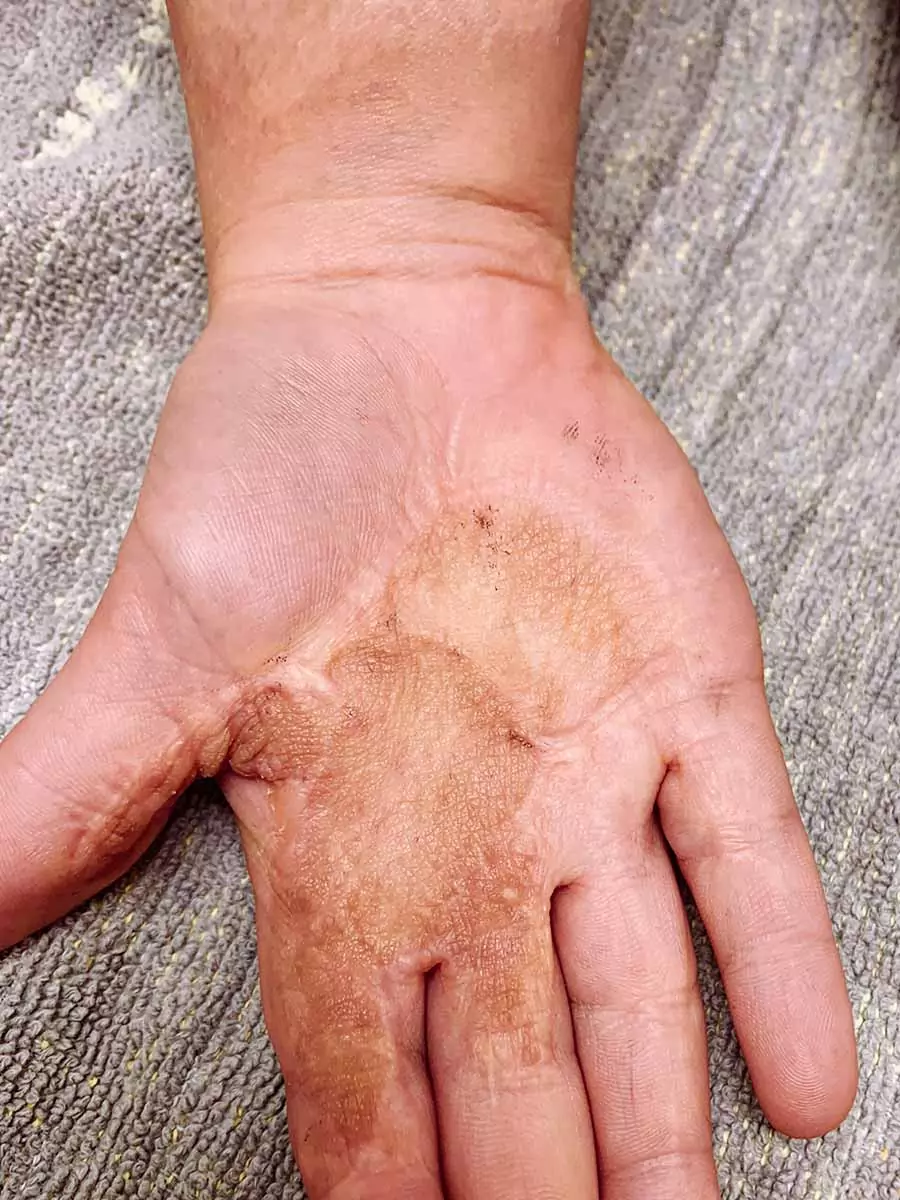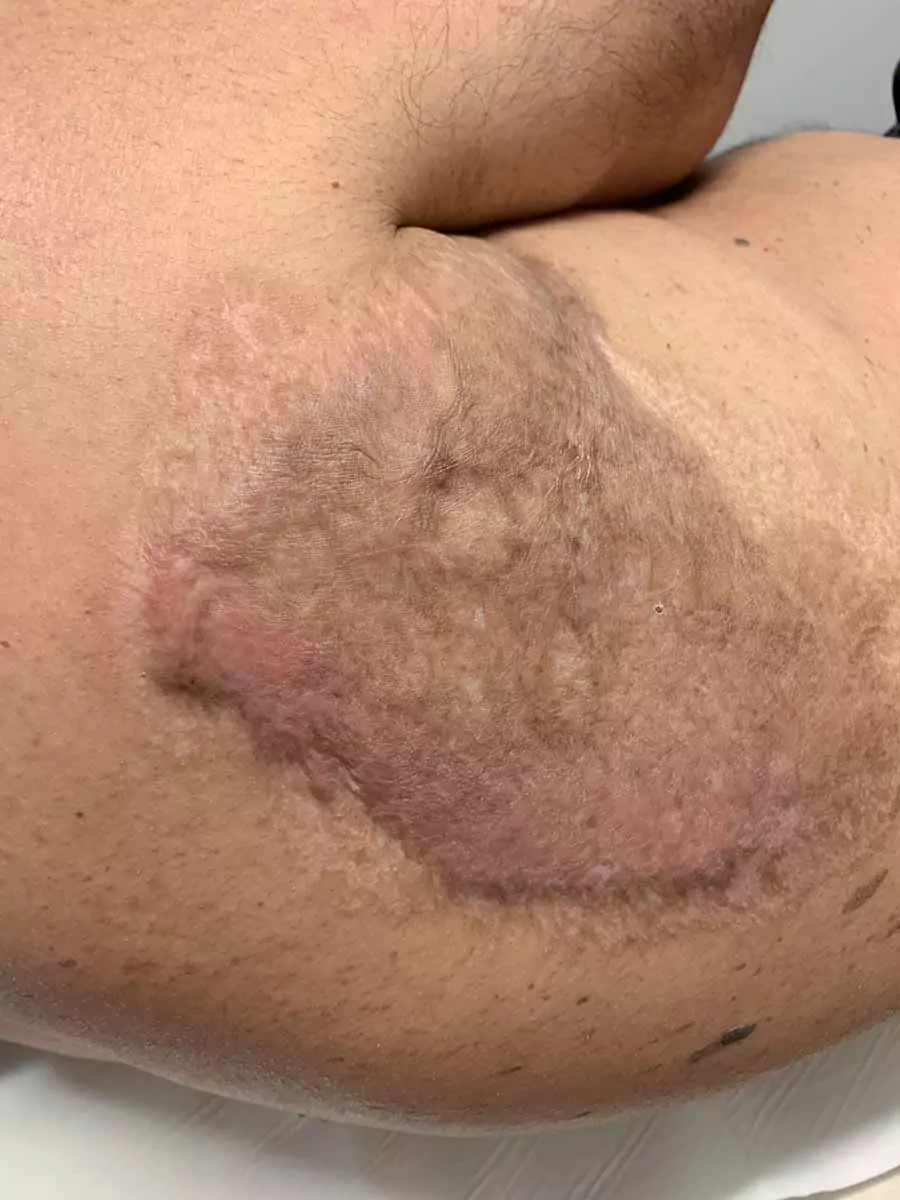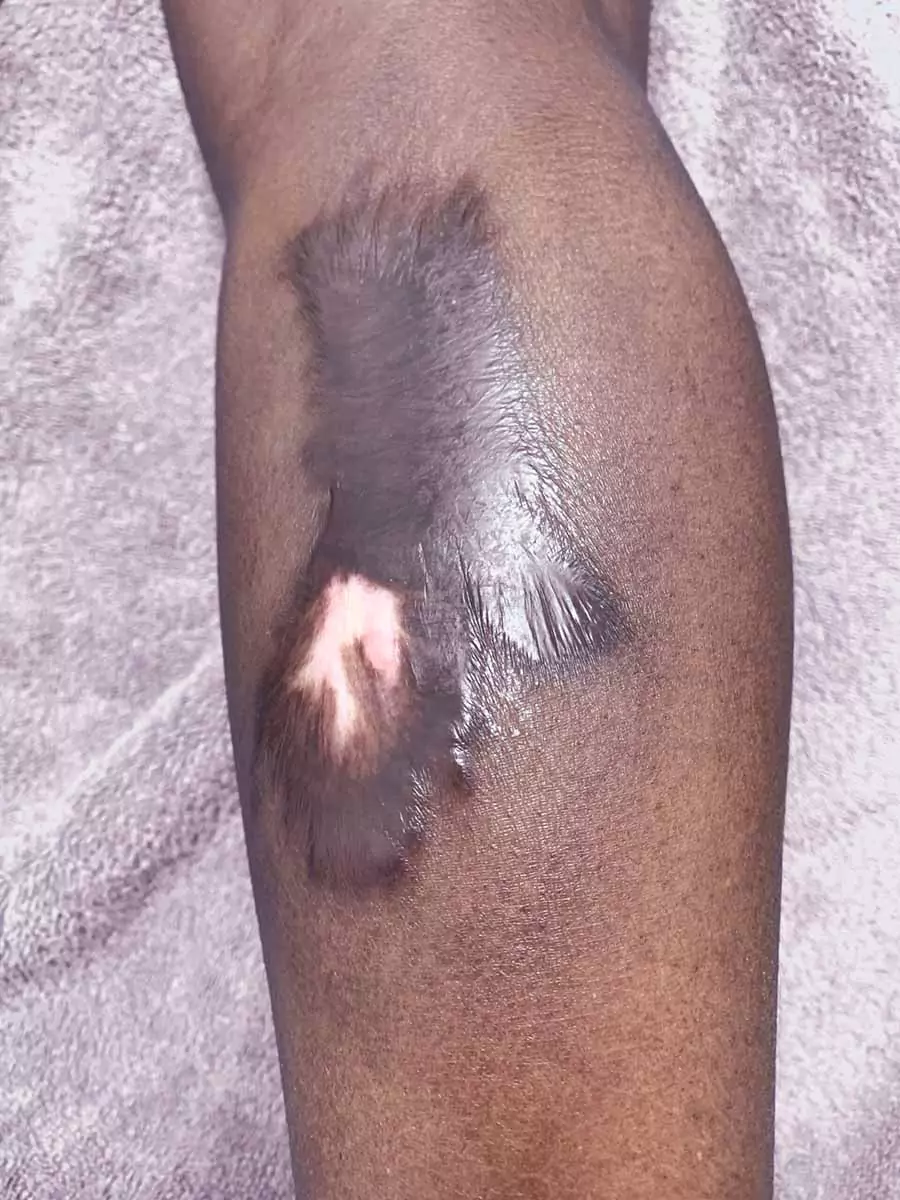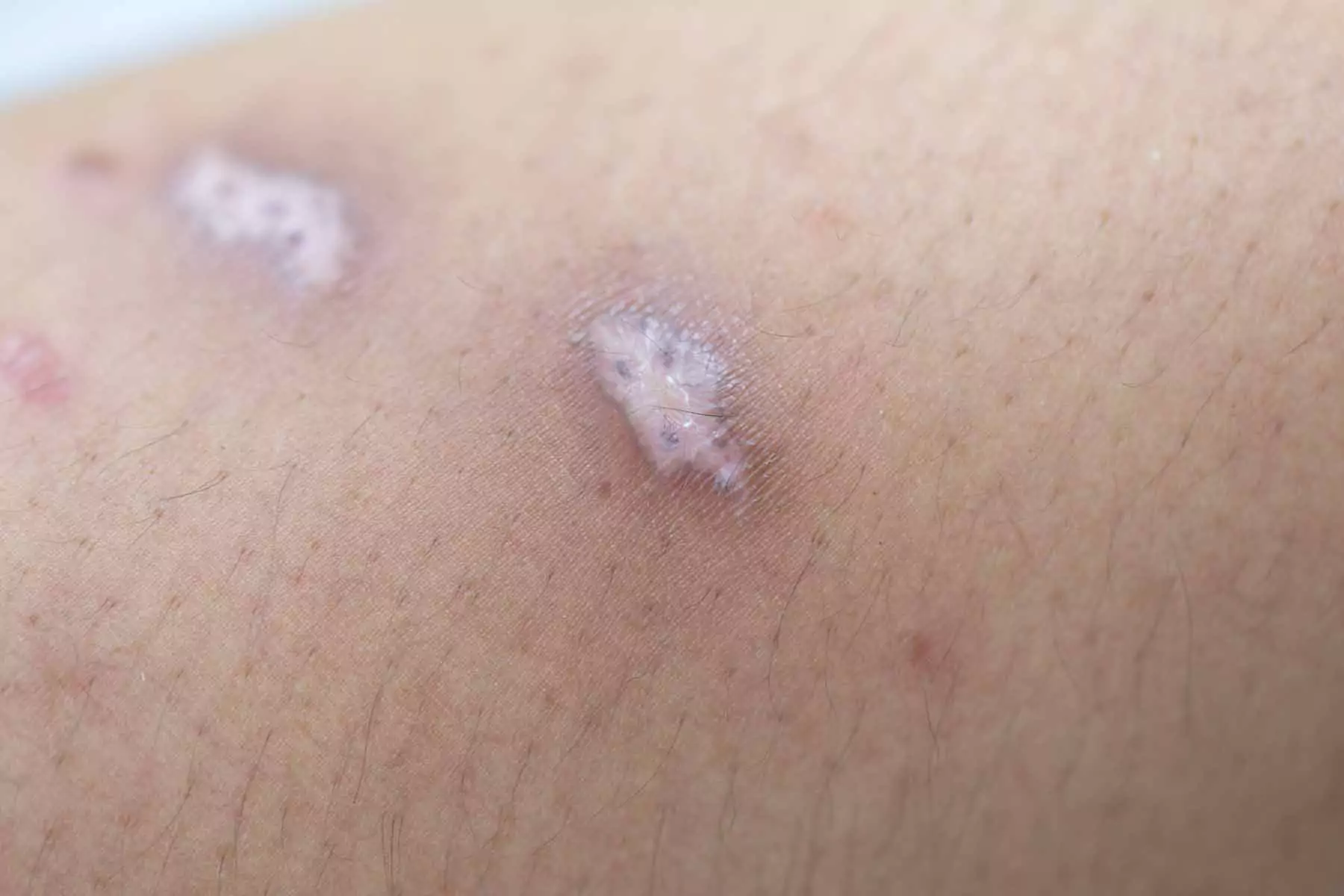About Pigmentation Disorders
The color of your skin is mainly determined by melanin, a substance made by special cells in your skin. These cells help protect your skin from sunlight.
Scars can look different in color due to problems during the healing process. This is called a pigmentation disorder.
Some scars become darker (hyperpigmentation) because of a strong inflammatory reaction, while others become lighter (hypopigmentation) due to long-lasting inflammation that stops pigment cells from producing color.
Whether a scar regains its pigment also depends on whether there are hair follicles present in the skin.
How do you treat pigmentation disorders?
Lasers like Q-switched lasers and picosecond lasers, along with microneedling, work well for scars that are too dark (hyperpigmentation).
Creams containing ingredients like hydroquinone and azelaic acid are also often used.
For lighter scars (hypopigmentation), treatments like micro-transplantation and microneedling, combined with applying a suspension of your own skin cells, can help.
These skin cells are not grown in a laboratory.










